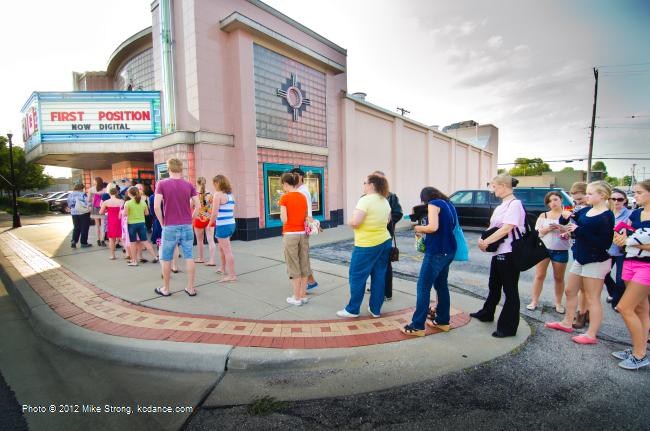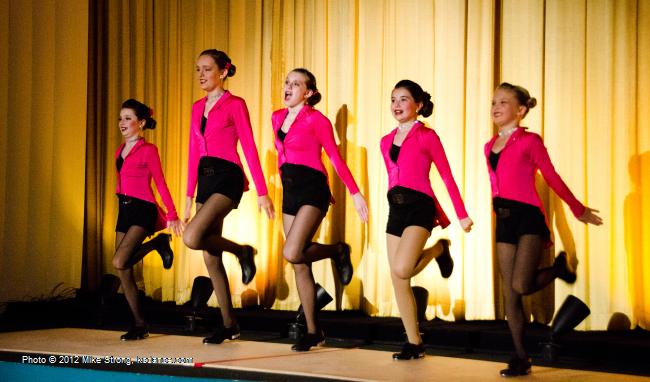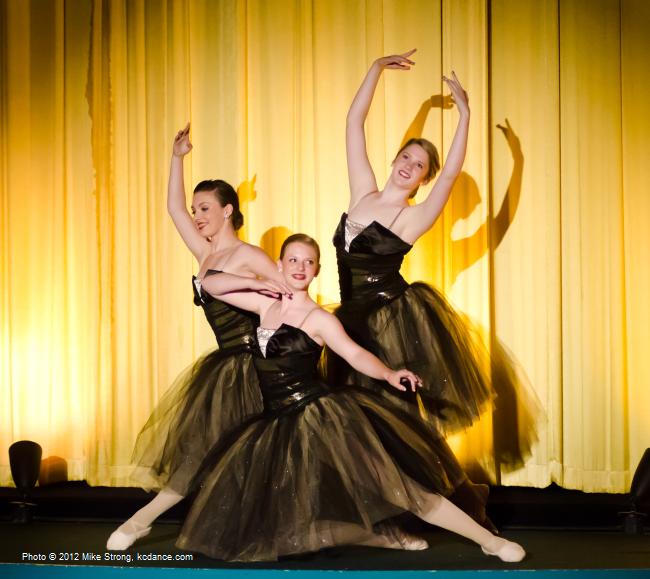All I can say is this is so good. I expected a good picture, sort of on the order of Mad Hot Ballroom or Spelling Bee (both of which I do like a lot). But this is really better. You can't help but enjoy yourself here.
This is directed by a woman who danced most of her youth, went on to journalism but never forgot her love of ballet (Bess Kargman, Director / Producer / Editor). And it shows. As anyone knows if you know me, my favorite dance shooters are generally dancers or former dancers. You see dance in their work and their thought processes because they are shooting what they know rather than "rules of thirds."
"First Position" followed six students for a year. In the process of following one student, Aran, they also picked up another student, a girl from Isreal, Gaya, when the two became aquanted and interested in each other. I would like to know who they picked the kids to follow and whether they started with a larger group because these kids were all fantastic. Most of them got an award or scholarship from the Youth America Grand Prix in New York. It took another year to edit the hundreds of hours down to a 90-minute movie.
Gaya, small as she is, does a powerful modern routine with leading edge hyper-fast martial-arts-like actions melting into fluid completions. Not unlike Robert Battle's Battleworks Company which used explosive, sudden movements derived from martial arts (now folded, with personnel brought into Ailey as Robert became Ailey's artistic director last year).
From the movie's website here is the list of kids who were featured and their ages:
Jules Jarvis Fogarty, age 10
Aran Bell, age 11
Gaya Bommer Yemini, age 11
Miko Fogarty, age 12
Michaela DePrince, age 14
Joan Sebastian Zamora, age 16
Rebecca Houseknecht, age 17
At the start we are introduced to each of the kids and their families and their teachers. Each kid's acheivement is a sum total of all of these people and the movie focuses on all of these elements as integral. We are shown Aran, a young boy, in early performance starting with older family videos and then move directly to his family showing what they contribute to his training and promise.
Aran's father is a Navy doctor and Aran's parents make choices, in their assignments and their living arrangements around the world to make sure Aran's training comes first in their family's life. That included taking an assignment in a war zone rather than moving his family just so that Aran could continue training.
Michaela is show first in the studio running through routines. A beautiful dancer with enormous power it is interesting to watch the digital cinema camera's motion artifacts as she hyperextends at the top of her grand jetés. Because of the scan rate reading the video sensor you can see three or four overlapped images of her legs as they move flat out and upwared into a bow with the back leg in a very muscular, graceful, sudden snap upward to complete the form at its top point.
Although her technique is striking enough, the way the image sensor records the movement produces motion artifacts which actually give multiple-overlapped images of leg positions at the zenith of each jeté, especially as the back leg snaps up into place. Later, you see her at the barré on pointe, in socks, on one leg with the other in retiré.
Once we have that introduction we are introduced to how she got here from civil-war torn Sierra Leone. Her white Jewish parents wanted more children and decided to adopt from troubled Africa. They had just picked one girl from the orphanage when their attention was also directed to a slightly older girl no one wanted because she had skin mottling across the top of her chest and into her neck, believing that the "spots" indicated some sort of disease. They are not. She was perfectly healthy.
The DePrinces adopted her as well. She had seen the horrors of war close up and described watching helplessly as her teacher was hacked to death. Despite that, all I could think as I watched the now much older Michaela dancing was "Persuing beauty, in life, in art, in life."
At the competition Michaela is working with injury and in a lot of pain. I thought, "Oh, no, this is the point in the documentary where disaster is about to occur." As her mother, fully aware of her pains, finishes watching Michaela's competition performance she tells the camera, "I was gasping for air." Sitting in the audience I thought, "Me too!" I think I wasn't the only one in that audience holding their breath.
These kids could bring tears to your eyes, for a lot of reasons, pain, persistence, triumph. And also for their parents, who have so much invested in their kids and are willing to shape their own lives to give opportunities to their children, and for the teachers and coaches.
And the humor. Documentaries are not known for their humor. But this one will have you laughing openly, with warm humor, as the cameras close in on teasing and typical moments. No one is made fun of. Instead, the humor draws you closer to each of the participants. Along with that are the variety of accents, skin colors and cultures which make this a rich combined environment. That included US kids, adopted into the US kids, a girl from Israel, and a boy from Cali, Columbia (Joan Sebastian Zamora - pronounced Joe---ahn).
It is also nice for the movie to briefly compare dancers with sports stars as the cameras go into the injuries which can kill a career and which dog every dancer at rates probably higher than most athletes. If I've ever bent your ear on this you will know that I am not in love with most comparisons with athletes because the comparisons are usually used to justify dance.
I always note that all an athlete has to do is to get some token (ball) across some goal in just about any manner including grunts and groans. A dancer on the other hand must have the right form and technique and facial expression and on and on before anything counts. And they have to repeat the same movements again and again. That goes way beyond typical athletic requirements and I think this movie does a decent job illustrating this.
The movie closes with an epilogue telling us what happened afterward with each of the dancers they followed. It is a nice touch and very gratifying because by that time you really want to know what happened with each of these dancers in the (still short) time between following the dancers and finishing the edit a year later.
Don't miss it in the theater. Go now. I will want to get the DVD when it comes out later for the features (promised on their website at http://www.balletdocumentary.com/). |




